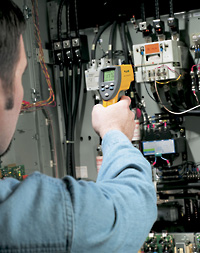Useful troubleshooting tips for repairing electrical equipment
 The most common failures in the electrical circuits of electrical appliances and household appliances:
The most common failures in the electrical circuits of electrical appliances and household appliances:
1) open circuit (resistance of an electric circuit is equal to infinity);
2) a significant increase in resistance;
3) a significant decrease in resistance;
4) short circuit (electrical resistance is close to zero).
Common causes of these malfunctions:
- breakage due to the aging of the elements, the passage of high currents, shock, vibration and corrosion;
- a significant increase in the resistance of electrical circuits compared to the nominal value caused by the aging of the elements, worseno contacts and contact connections, deviation of the parameters of individual elements;
- a significant decrease in the resistance of electrical circuits compared to the nominal value due to an increase in surface leaks and aging of the elements.
Short circuits are the result of breakdown of insulation, short circuits of conductors and elements on the housing and between each other (for conductors of different polarities and phases).
When troubleshooting, you need to know and be able to use the signs of proper operation of electrical equipment.
They can be divided into two main groups ...
Using the block-sequential method for troubleshooting electrical circuits

What is a block? A certain device or part of the circuit selected by us, having the so-called “input” and “output” for signal transmission, and the input “power”.
Consider a simple circuit where, as such, there is no control signal, its function is performed by directly turning on the power to the executing mechanism (output device).
Further, in this case, the concepts of “input” and “output” will be applied to the transmission of the supply voltage.
Any device in itself can be thought of as a separate unit. For example, we inserted the plug into a power outlet, made an “input”, and at the “output” we get the result: we watch TV, the iron is heating, the music sounds, etc.
Let's take as an example a lamp - a night lamp with rotating light filters and a 12-volt incandescent lamp. We divide the object, for convenience, into separate blocks ...
